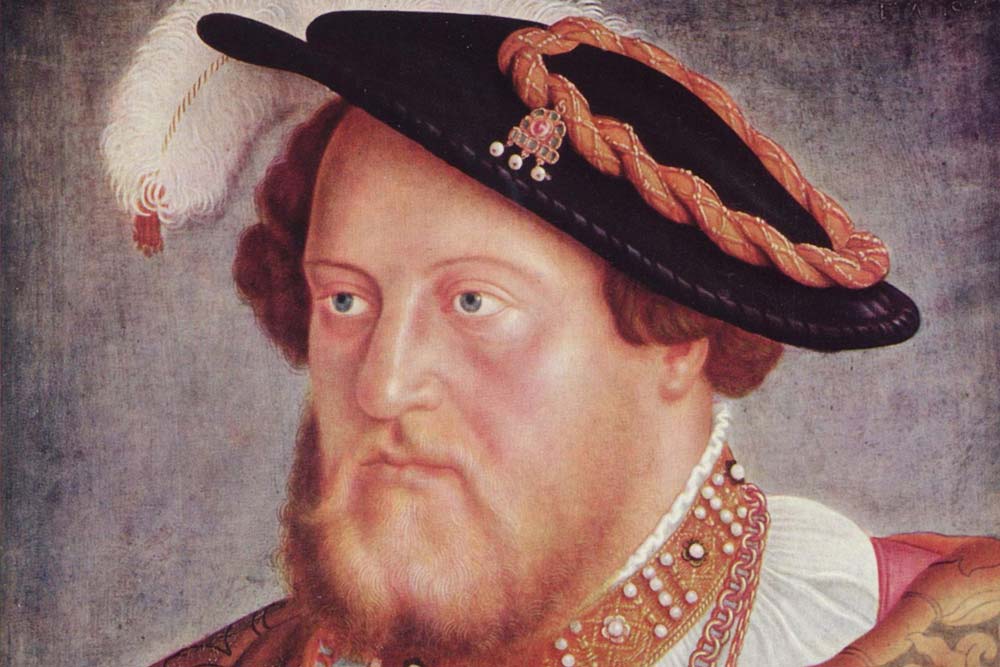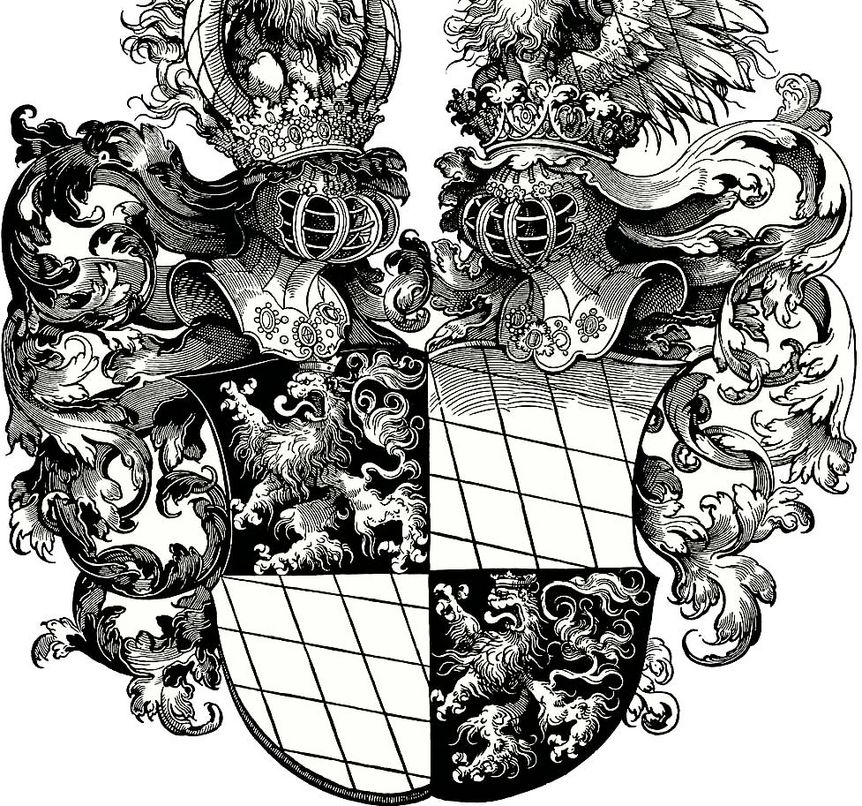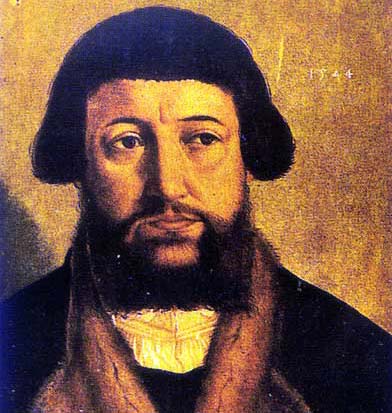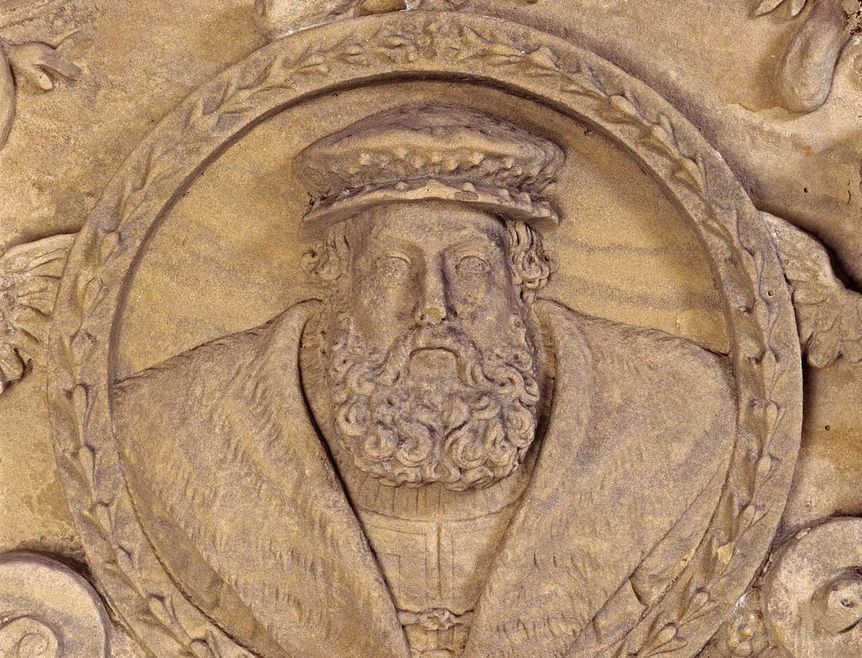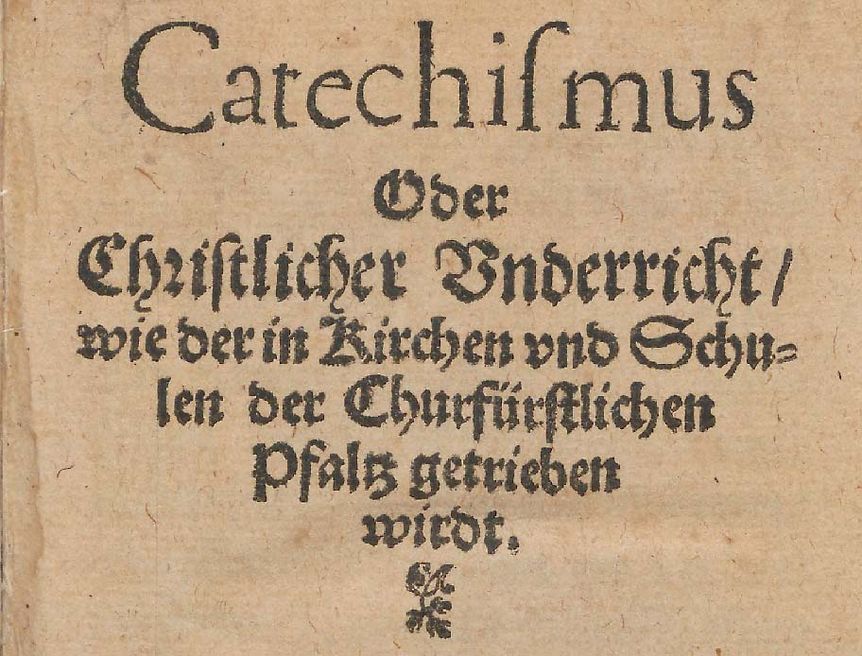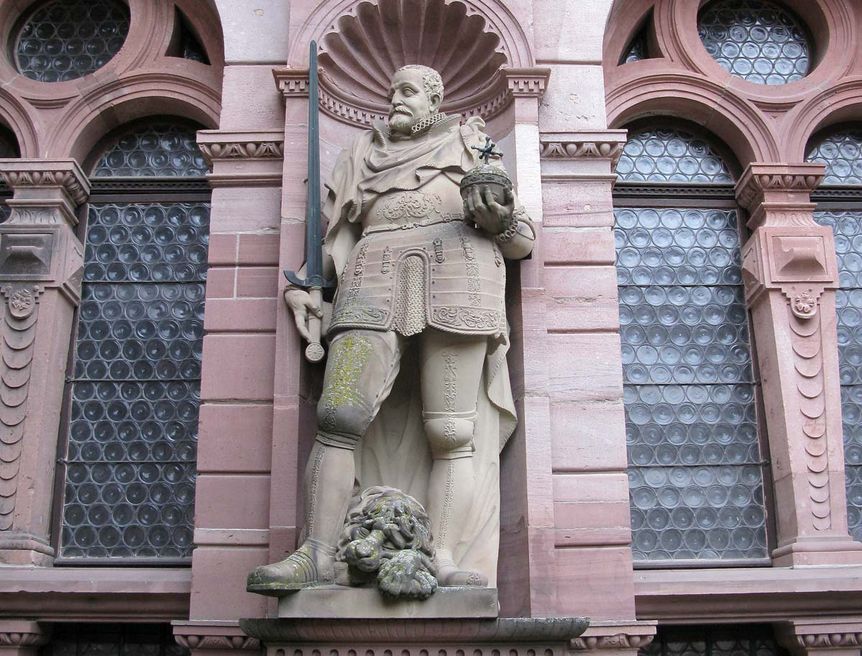Builder, art collector, ProtestantOttheinrich von der Pfalz
Prince-Elector Ottheinrich von der Pfalz (1502–1559) was an ideal Renaissance prince, creating important architectural structures and acting as a patron of the arts. He converted to the evangelical faith early on and ultimately introduced the Lutheran Reformation during his rule.



